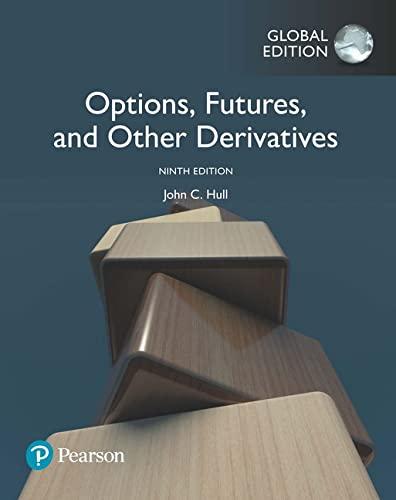The formula for the price (c) of a European call futures option in terms of the futures
Question:
The formula for the price \(c\) of a European call futures option in terms of the futures price \(F_{0}\) is given in Chapter 18 as where
\[c=e^{-r T}\left[F_{0} N\left(d_{1}ight)-K N\left(d_{2}ight)ight]\]
\[d_{1}=\frac{\ln \left(F_{0} / Kight)+\sigma^{2} T / 2}{\sigma \sqrt{T}} \quad \text { and } \quad d_{2}=d_{1}-\sigma \sqrt{T}\]
and \(K, r, T\), and \(\sigma\) are the strike price, interest rate, time to maturity, and volatility, respectively.
(a) Prove that \(F_{0} N^{\prime}\left(d_{1}ight)=K N^{\prime}\left(d_{2}ight)\).
(b) Prove that the delta of the call price with respect to the futures price is \(e^{-r T} N\left(d_{1}ight)\).
(c) Prove that the vega of the call price is \(F_{0} \sqrt{T} N^{\prime}\left(d_{1}ight) e^{-r T}\).
(d) Prove the formula for the rho of a call futures option given in Section 19.12.
The delta, gamma, theta, and vega of a call futures option are the same as those for a call option on a stock paying dividends at rate \(q\), with \(q\) replaced by \(r\) and \(S_{0}\) replaced by \(F_{0}\). Explain why the same is not true of the rho of a call futures option.
Step by Step Answer:






